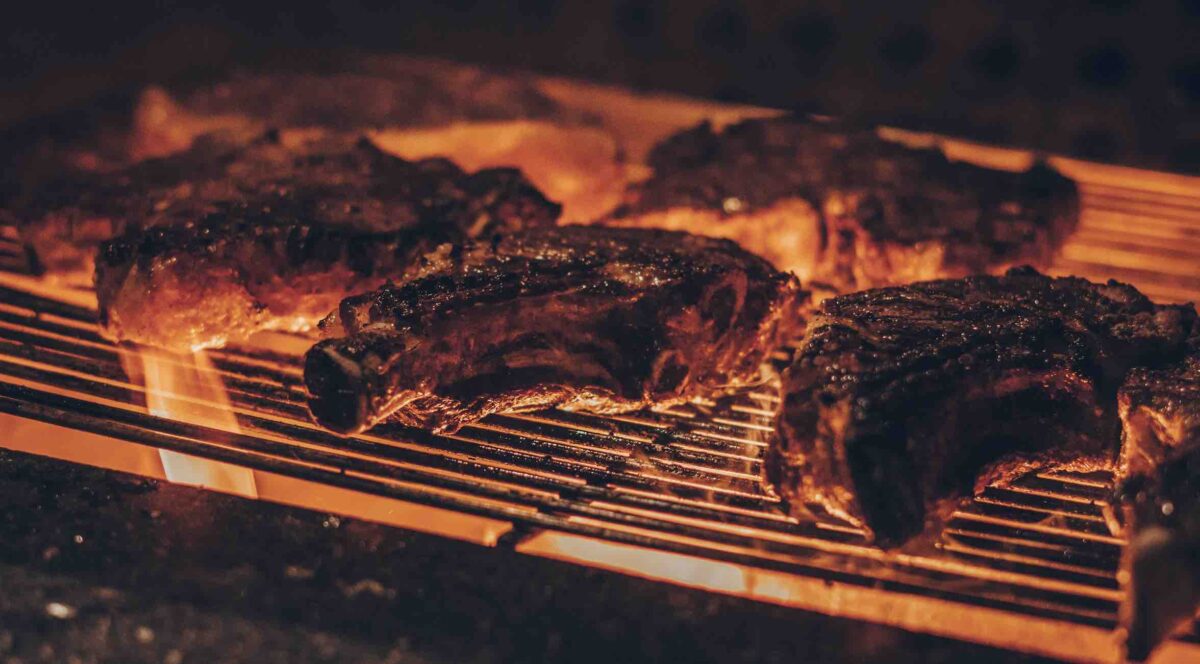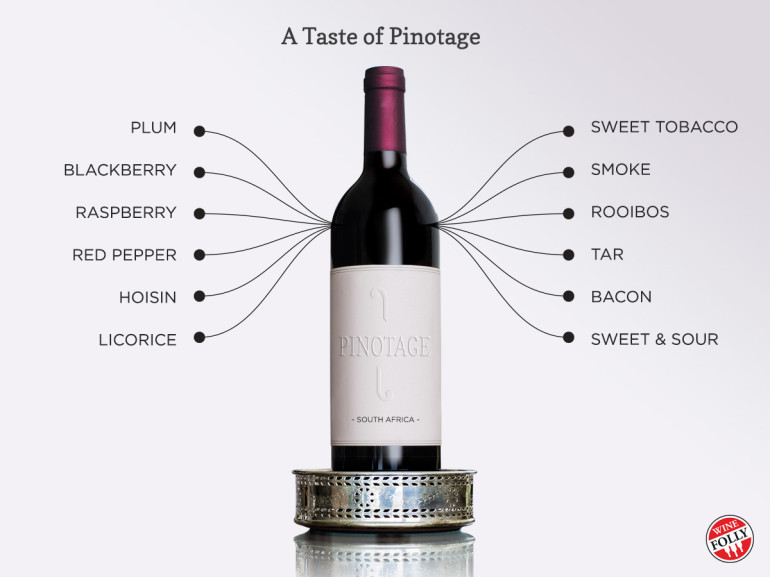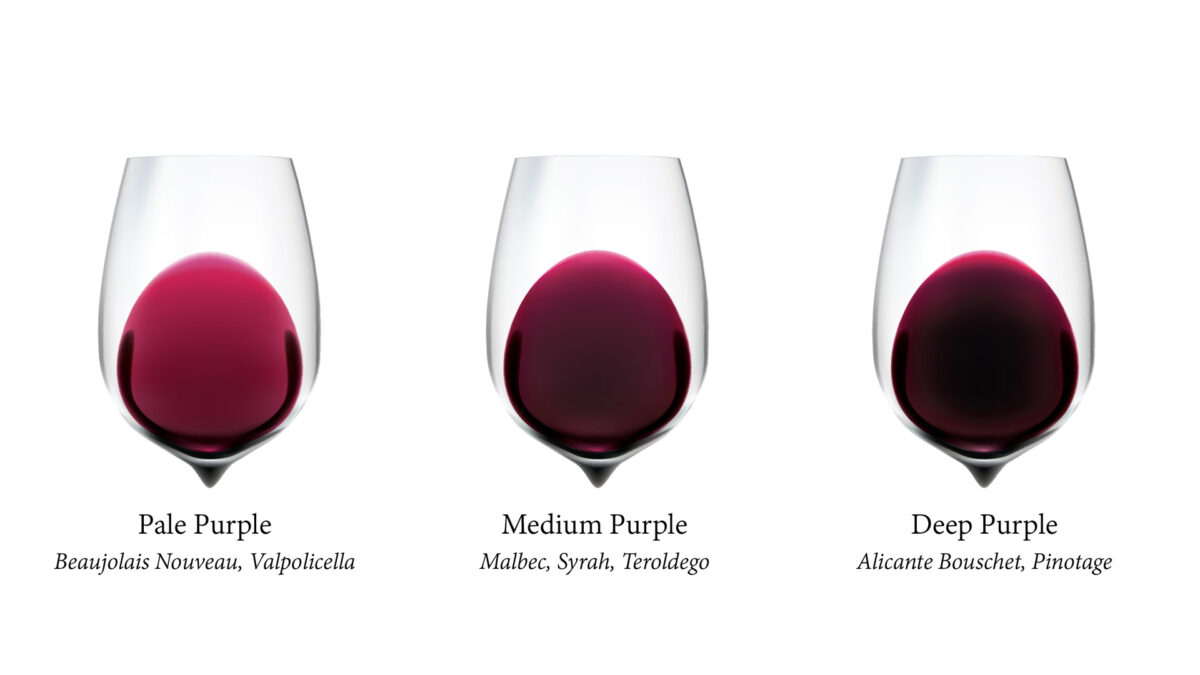Also known as: Perold’s Hermitage x Pinot
Table of Contents
Primary Flavors
- Black Cherry
- Blackberry
- Fig
- Mint
- Game
Taste Profile
South Africa’s Pinotage is a chameleon, offering a spectrum of styles from youthful, fruit-forward notes to robust, age-worthy expressions. Despite its initial reputation for rubber-like aromas, top-tier examples truly shine, showcasing the grape’s potential for finesse and complexity.
On the nose, Pinotage unveils a vibrant array of fresh red fruits in cooler climates, evolving into jammy dark fruits in warmer regions. Superior oak-aged bottles introduce layers of vanilla and spice, while aged expressions may yield deeper hints of leather, smoked meat, and chocolate.
On the palate, Pinotage can be full-bodied and tannic. In warmer climates, its tannins become silkier, alcohol levels rise, and the body turns fuller. However, many producers are experimenting with lighter styles, creating wines similar to its parent, Pinot Noir.
How to Serve Pinotage Wine
Serve Pinotage at cellar temperature, between 60-68°F (15-20°C), to best amplify its aromas without highlighting the alcohol. A universal wine glass is ideal, promoting aeration and enhancing the bouquet. Decant for an hour to soften the tannins and allow the wine to express itself fully.
Over time, it will develop captivating complexity, with ripe plum, leather, and chocolate notes. Most mature gracefully for 5-10 years, while exceptional bottles can evolve for up to 15 years (sometimes more).

SERVE
60–68°F / 15-20°C
GLASS TYPE
Universal
DECANT
1 Hour
CELLAR
10+ Years
Pinotage Food Pairing
Pinotage pairs well with a variety of dishes. Consider pairing easy-drinking versions with pepperoni pizza or a hearty beef stew. If your Pinotage has more earthy undertones, try it with roasted duck or a rich mushroom risotto.
For a full-bodied, mature Pinotage, robust dishes like braised short ribs or a pepper-crusted steak make excellent partners. When in doubt, its smoky nuances make it a perfect pairing with BBQ.

5 Fun Facts About Pinotage
- Pinotage is a Pinot Noir and Cinsaut cross created in 1925.
- Pinotage was almost lost to history; only four seedlings were initially produced and nearly thrown away before being rescued by a professor.
- Despite two parent grapes that have low color and tannin, Pinotage produces deeply colored wines with high levels of tannin.
- Pinotage’s “burnt rubber” aroma can result from specific winemaking techniques, but modern practices have minimized this trait.
- Every year on the second Saturday of October, South Africa celebrates International Pinotage Day.

Where it Grows
South Africa’s indigenous grape, Pinotage, largely remains rooted in its homeland, where it accounts for less than 10% of the total plantings. Despite its lack of travel and checkered reputation, the grape enjoys a devoted fan base worldwide, thanks to its complexity and depth of flavor when made right.
- South Africa: 17,426 acres (7,052 hectares)
- New Zealand: 94 acres (38 hectares)
- USA: 50 acres (20 hectares)
Total Vineyard Area – 17,624 acres (7,132 hectares) (data from the University of Adelaide, 2021)

South Africa
What to expect: Pinotage produces deeply colored tannic wines with ripe red and black fruit flavors similar to Syrah, but you can also find lighter versions that are closer to Pinot Noir in style too.
You’ll almost always find a nice mixture of fruit-forwardness and earthy, smoky tones. Age-worthy examples often have coffee, vanilla, and toast aromas from barrel aging. The best expressions come from areas with warm, Mediterranean climates, such as Stellenbosch and Paarl.
Stellenbosch benefits from diverse soils and microclimates, and Pinotage thrives in the warmest sub-regions, such as Simonsberg. Expect rich flavors of ripe dark fruits and hints of chocolate, coffee, and spice. Full-bodied with well-integrated tannins, versions from Stellenbosch age well.
Paarl’s warmer climate is perfect for Pinotage. Expect intense fruit flavors like black cherry and raspberry, with a touch of earthiness. Velvety texture, balanced acidity, and a lingering finish are common.

In-Depth Knowledge
Take a deep dive into understanding the complex nature of Pinotage.
A Short History – The South African Grape
Pinotage is a grape cross between Cinsaut and Pinot Noir. It was first crossed in South Africa in 1925 in the gardens of scientist Abraham Perold. Perold observed how Pinot Noir struggled in South Africa’s warm climate, so he crossed it with a very productive species: Cinsaut (aka Hermitage). Perold’s goal was to create a wine that was as delicious as Pinot Noir but could handle the South African climate as well as Cinsaut.
Unexpected Results: A Very Dark Grape
The result of the crossing between Cinsaut and Pinot Noir was unexpected. The Pinotage grapes were extremely dark in color, and the wine they created was bold and high in tannin and anthocyanin — nothing like its progenitors. Despite the difference in flavor, Pinotage could soak up the South African sun and produce large numbers of grapes, which farmers desired. However, this hurt the grape’s reputation.
Pinotage Used to Have a Bad Reputation
Since Pinotage is such a productive wine grape, producers often made very low-quality commercial wine with it. It didn’t help that it was such an inky grape, making it possible for wineries to stretch their wine as thin as possible. Winemakers didn’t realize in the 1980s and 1990s that it was tricky to make well.
The grape’s biggest challenge was producing paint- or rubber-like aromas when not grown or vinified carefully. Reducing yields and water stress, using the correct clones in the vineyard, and keeping fermentation temperatures lower helped reduce these funky, rubbery aromas.